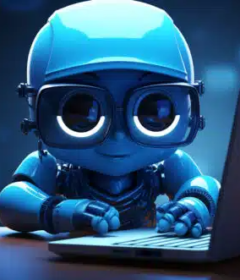The Internet of Things: Enlightening Objects and “Dumb” Machines

“Dumb” objects like microwaves and washing machines communicate with their owners by buzzing, beeping, or making some otherwise hideous noise that you have to be within earshot to hear. But when those machines are connected to the Internet and given the ability to send and receive data, they communicate not with the user by making noise, but with each other through integrated Wifi.
This machine-to-machine (M2M) communication is the essence of the Internet of Things (IoT), a global technological revolution Forbes defines as “the concept of basically connecting any device with an on- and off-switch to the Internet (and/or to each other).” Examples include smartphones, coffee makers, washing machines, headphones, lamps, and wearable devices, as well as almost anything else you can think of.
This “next big thing” revolution – which has already begun, but is poised to explode into the mainstream within the next five years – is changing the relationship between people and their “things.” This was made possible by a perfect storm of events: the proliferation of high-speed, broadband Internet; the near-total penetration of mobile devices; the dramatic reduction in the cost of technology; and the emerging trend towards wearable devices, with the advent of th Microsoft Band and Apple Watch.
What Will IoT Look Like in Your Life?
- Your smart water meter communicates with both you and the utility company that sells you water. When utility usage is at the day’s lowest peak and water is at its cheapest, the meter sends you a text message telling you the perfect time to take a shower or run the dishwasher.
- Your smart refrigerator sends you a text message with a list of items that are about to expire, along with a few recipes that include those items. When you confirm a recipe, the refrigerator sends a message to the oven instructing it to begin preheating to the right temperature.
- When you turn off the water after a shower in the morning, your shower sends a message to your coffee maker to start brewing a cup so it will be ready by the time you’re dressed.
All of this will be recorded on your wearable device, as it tracks the devices you use, your heart rate, calories consumed, etc., thus creating the most intimate, largest, most complex human database on the planet.
Smart Cities: The Next Generation of IoT
But, according to Wired, the real-world implications of IoT are much, much larger than household conveniences. For example, in 2007, a bridge collapse in Minnesota killed many people when failing steel finally gave way under the weight of passing cars. To prevent future catastrophes, engineers could incorporate sensors into bridges that can detect when concrete is crumbling, steel is warping, or if the bridge is icy or wet. That information could simultaneously be sent to municipal authorities, as well as to drivers in approaching, Wifi-enabled “smart” cars.
Safer infrastructure is just one aspect of IoT’s potentially greatest contribution: the smart city. Smart traffic signals could automatically adjust in real time to changes in traffic patterns, re-routing connected cars to less congested areas of town. That information would be picked up by smart parking meters, which could then “decide” to raise or lower the price of parking spots to coerce drivers into or out of certain parts of town to ease congestion. Smart garbage cans could inform sanitation workers which routes were the highest priority.
By 2020, governments will have invested $108 billion in smart city infrastructure technology.
Google Brillo: Like Windows for IoT
PCs run on Windows. Macs run on OS X. Smartphones run on the Android platform, unless they are iPhones, which run on iOS. So what operating system would unite the Internet of Things?
A little company called Google is hoping to provide the answer to that question. Reports have emerged that Google is working on a platform called Brillo, which is a pared-down version of Google’s mobile operating system, Android. Brillo will reportedly target low-power devices with just 32MB to 64MB of RAM.
The companies that manufacture these devices are all in. If you can think of it, there is a good chance someone is making it compatible for IoT. By 2009, about 900 million formerly “dumb” objects had been turned “smart.” By 2020, that number is expected to reach as high as 75 billion. If Google could unite them all with the Brillo platform, the little start-up might just have a bright future in the tech world.
Your Devices Talk to Your Smartphone
With the rapid evolution of wearable tech, including the Apple Watch and Microsoft Band, a future where your devices talk to you constantly through your smartwatch is not that far off. Your coffee pot pings you when your coffee’s ready, your smart pillbox text messages you when you’re about to run out of pills.
But it doesn’t end there. Think of the data you’ll be sending to IoT. With your smartwatch on all the time – learning about where you go, what you do, the devices you use – think of the data you’re collecting about yourself, and your habits. It’s gold to companies wanting to get right into your psyche to learn how to sell to you more, and better.
What Does This Have to do With Online Marketing?
Smart marketers have to start thinking of how the evolution of IoT will impact their marketing strategies. The most basic step that all marketers should already be highly focused on is making sure their websites are responsive, and work across devices and platforms. How will your site appear on wearable devices?
In addition, starting to think about data-driven paid search strategies, such as real-time bidding, is something that most companies should start investigating. How is all the data gathered by IoT going to be utilized? Can you start creating large databases of potential customers to market to by buying inventory? Smart marketers need to start investigating how these trends will impact their industry, and preparing for the not-so-distant future of this massive change in how we interact with static items around us.
IoT is poised to make a bigger difference in the daily lives of average people than anything since the regular Internet. The era of mass connectivity is here, and the next major innovation will animate and enlighten the mundane objects that surround us every day.



